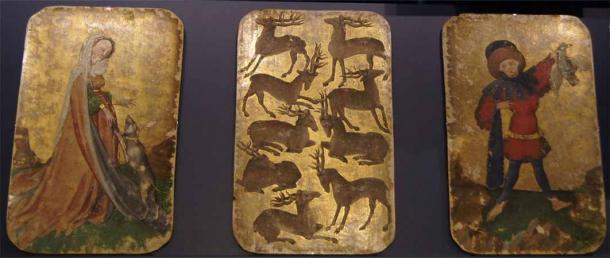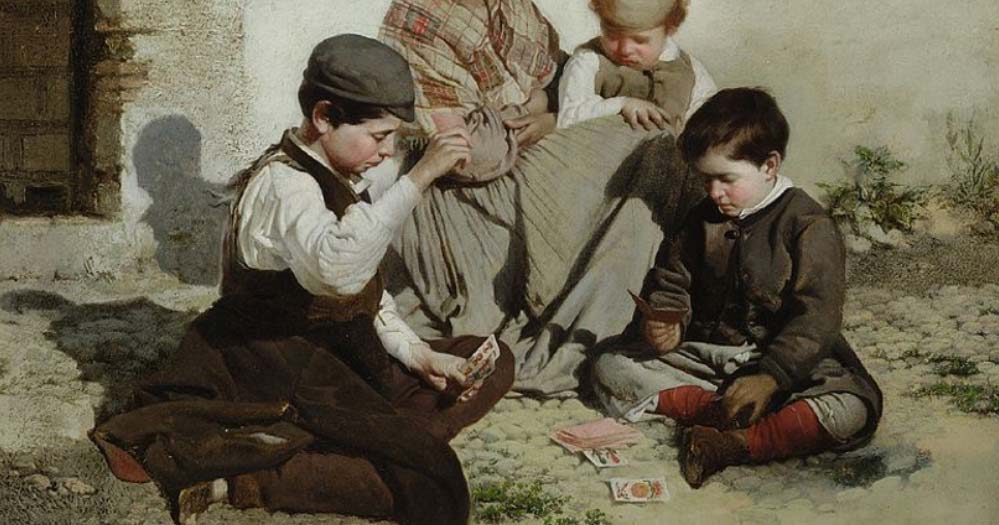Oriental Origins of Playing Cards: Ganjifeh And Yezi Xi
In 1392 France, Charles Poupart, a treasurer to king Charles VI (1368 – 1422), recorded a payment to a Parisian painter named Jacquemin Grigonneur for painting three illuminated packs of cards commissioned by the king for his amusement. A couple of hundred years later, in the 17th century, Cardinal Mazarin, the finance minister to King Louis XIV of France (1638 – 1715), kept the royal treasury safely out of debt by converting the Palace of Versailles into a giant card-playing casino. In 1781, Antoine Court de Gébelin (1725 – 1784), a former protestant pastor, published a book titled Le Monde Primitif ( The Primitive World) which included his theories on the origins of playing cards. Using primitive notions of image analysis and etymology, he speculated that the Tarot, for example, was a fragment of a mystical ancient text brought out of Egypt and eventually into Europe by Gypsies. The popularity of Le Monde Primitif inspired one Jean-Baptiste Alliette who went on to become the first professional Tarot occultist known to history. Choosing the name Etteilla as his pseudonym for a more exotic appeal, Alliette published Manière de se récréer avec le jeu de cartes nommées Tarots ( Way to recreate with the game of cards named Tarots) in 1785.

The Card Players II by Almanach (17th century) (Public Domain)
However, despite its apparent popularity in France, playing cards are not of French origin. In 1379, a card game called naibi had already gained popularity in central Italy. The term naibi is derived from the Arabic term na'ib (“delegate” or “deputy”). Another one of the earlier known playing cards is the Stuttgarter Kartenspiel ( Stuttgart deck), a hunting-themed deck of playing cards painted on gilded pasteboard dates from circa 1430. Another card of similar characteristics was the Ambraser Hofjagsdpiel ( Court Hunting Pack of Ambras), a pack of cards painted around the 1440s and attributed to the Swiss engraver Konrad Witz.

Stuttgart Card Game, Basel area, about 1430, Landesmuseum Württemberg (1rhb / CC BY-SA 4.0)
The Deck Of Ganjifeh
Although, at least at this time, there is no conclusive answer to the most basic question about the history of playing cards, such as where and when they were invented, this does not mean a lack of theories about their possible origins. Sir Michael Dummett (1925-2011), a professor of Logic, claims that a prototype 48-card game with four suits, each with ten numerals and two courts, may have existed in Persia or Central Asia. The Persians refer to this deck as Ganjifeh. The first syllable of the word Ganjifeh can be attributed to the Persian word ganj (“treasure”).
Like this Preview and want to read on? You can! JOIN US THERE ( with easy, instant access ) and see what you’re missing!! All Premium articles are available in full, with immediate access.
For the price of a cup of coffee, you get this and all the other great benefits at Ancient Origins Premium. And - each time you support AO Premium, you support independent thought and writing.
Martini Fisher is an Ancient Historian and author of many books, including “Time Maps: History, Prehistory and Biological Evolution”| Check out MartiniFisher.com
Top Image: Children playing cards by Rafael Romero de Barros (1876) (Public Domain)
By: Martini Fisher



















